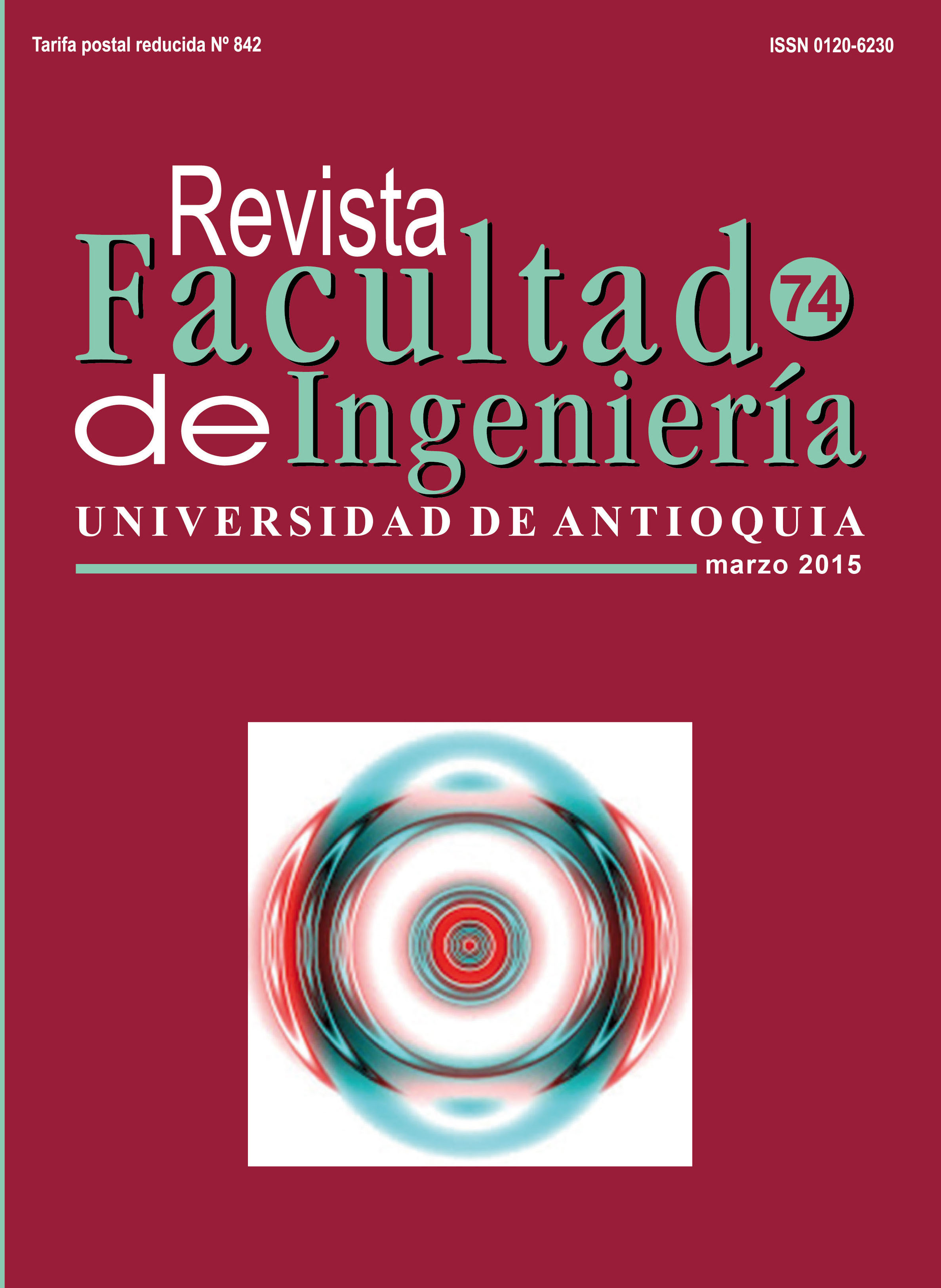Band-Pass filters using OSRR cells
DOI:
https://doi.org/10.17533/udea.redin.16695Keywords:
plane filters, Split Ring Resonators (SRR), meta-materialsAbstract
This paper presents the design process (including optimization and characterization) of a band-pass filter through the use of OSRR-structured meta-material cells over micro-strip substrates. The proposed design, which stems from the OSRR cell model, includes a partial ground plane etched at the bottom plane instead of, and square windows etched at the bottom plane and achieve optimization through a parametric analysis carried out over the transmission-line segments that connect the cells to the main transmission line as well as over inter-cell lines. The results yielded a resonance central frequency and a corresponding bandwidth of 2.7 GHz and 700MHz, respectively. By controlling the length of the connecting lines from the cells to the main transmission line, it is possible to tune the central frequency to a lower frequency than that of an OSRR cell. With respect to the ground plane windows version, the partial ground plane version has the capacity to add transmission zero (4.6GHz) above a/the transmission pole, which improves the rejection depth (8dB) without increasing the filter size.
Downloads
References
V. Veselago. “The electrodynamics of substances with simultaneously negative values of ε and µ”. Sov. Phyis. USPEKHI. Vol. 10. 1968. pp. 509-517. DOI: https://doi.org/10.1070/PU1968v010n04ABEH003699
V. Veselago, L. Braginsky, V. Shkloverand C. Hafner. “Negative Refractive Index Materials”. Journal of Computational and Theoretical Nanoscience, Vol. 3. 2006. pp. 1-30. DOI: https://doi.org/10.1166/jctn.2006.3000
J. Pendry, J. Holden, D. Robbins, W. Stewart. “Magnetism from Conductors and Enhanced Nonlinear Phenomena”. IEEE Transactions on Microwave Theory and Techniques. Vol. 47. 1999. pp. 2075-2084. DOI: https://doi.org/10.1109/22.798002
J. Bonache. “Metamaterials in Microstrip Technology for Filter Applications”. Antennas and Propagation Society International Symposium, IEEE. Vol. 1A. 2005. pp. 668-671.
J. Bonache. Filtros de microondas basados en metamateriales y en resonadores concentrados. PhD Thesis, Universidad Autónoma de Barcelona. Bellaterra, Spain. 2006. pp. 29-40.
J. Baena, J. Bonache, F. Martin, R. Sillero, F. Falcone, et al. “Equivalent-Circuit Models for Split-Ring Resonators and Complementary Split-Ring Resonators Coupled to Planar Transmission Lines”. IEEE Transactions on Microwave Theory and Techniques. Vol. 53. 2005. pp. 1451-1461. DOI: https://doi.org/10.1109/TMTT.2005.845211
K. Phani, S. Karthikeyan, A Compact and High Performance Band-Stop Filter Using open Complementary Split Ring Resonator. Proceedings of the National Conference on Communications (NCC). New Delhi, India. 2013. pp. 1-5.
J. Ruiz, J. Hinojosa, A. Alvarez. “Microstrip notch filters based on open interconnected split ring resonators (OISRRs)”. Applied Physics A. Vol. 112. 2013. pp. 263-267. DOI: https://doi.org/10.1007/s00339-013-7744-x
L. Wang, X. Qi, F. Yong, Z. Bo. “Electric Split-Ring Resonator Based on Double-Sided Parallel-Strip Line”. IEEE Antennas and Wireless Propagation Letters. Vol. 12. 2013. pp. 69-71. DOI: https://doi.org/10.1109/LAWP.2013.2238598
J. Martel, R. Marqués, F. Falcone, J. Baena, F. Medina, et al. “A New LC Series Element for Compact Bandpass Filter Design”. IEEE Microwave and Wireless Components Letters. Vol. 14. 2004. pp. 210- 212. DOI: https://doi.org/10.1109/LMWC.2004.827836
R. Marqués, F. Mesa, J. Martel, F. Medina. “Comparative Analysis of Edge- and Broadside-Coupled Split Ring Resonators for Metamaterial Design—Theory and Experiments”. IEEE Transactions on Antennas and Propagation. Vol. 51. 2003. pp. 2572-2581. DOI: https://doi.org/10.1109/TAP.2003.817562
J. Ruiz, J. Hinojosa. “Double-sided open split ring resonator for compact microstrip band-pass filter design”. IET Microw. Antennas Propag. Vol. 6. 2012. pp. 846-853. DOI: https://doi.org/10.1049/iet-map.2011.0465
Downloads
Published
How to Cite
Issue
Section
License
Copyright (c) 2018 Revista Facultad de Ingeniería

This work is licensed under a Creative Commons Attribution-NonCommercial-ShareAlike 4.0 International License.
Revista Facultad de Ingeniería, Universidad de Antioquia is licensed under the Creative Commons Attribution BY-NC-SA 4.0 license. https://creativecommons.org/licenses/by-nc-sa/4.0/deed.en
You are free to:
Share — copy and redistribute the material in any medium or format
Adapt — remix, transform, and build upon the material
Under the following terms:
Attribution — You must give appropriate credit, provide a link to the license, and indicate if changes were made. You may do so in any reasonable manner, but not in any way that suggests the licensor endorses you or your use.
NonCommercial — You may not use the material for commercial purposes.
ShareAlike — If you remix, transform, or build upon the material, you must distribute your contributions under the same license as the original.
The material published in the journal can be distributed, copied and exhibited by third parties if the respective credits are given to the journal. No commercial benefit can be obtained and derivative works must be under the same license terms as the original work.










 Twitter
Twitter